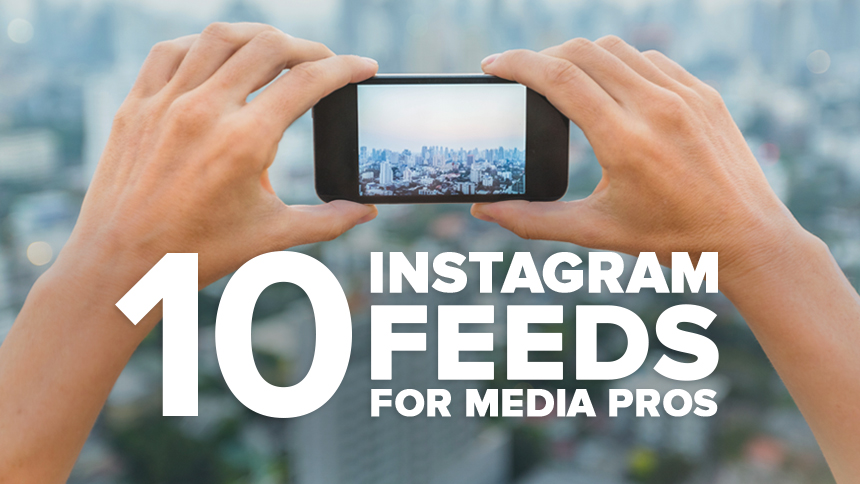Snapchat. Instagram. Facebook. Twitter. Linkedin. Quora. Reddit. Pinterest.
The list of social channels goes on and on. But should your company be on every channel? Or just one?
Also on Mediabistro


And how do you know if you’re focused on the best social channel for you?
Well, take a deep breath. We’re here to help you successfully navigate the social media jungle.
First, it’s important to evaluate if social media is right for your business and marketing plan. Understand that these social channels command a lot of attention, and regardless of your business type (B2B or B2C), your customers are people that are active on some form of social media.
Once you truly understand your audience and how to connect with them, then there is a social channel for you. But which one?
How to evaluate the right social media channels for your company
Before you start posting the same thing on every channel, let’s take a more strategic approach.
Quantitative Approach: What do the numbers say?
To get a full grasp on social media’s impact, you should start by researching what channels are working in your industry. Make a list of your top five competitors or top five brands whose customers align with your target demographic and identify what channels work for them.
Using an online tool like SimilarWeb or Spyfu to look at each company’s social traffic volume can provide a comparable scope.
Let’s say you have an audience that’s similar to the Bonobos audience—working males that are stylish and active. SimilarWeb shows that Bonobos gets 11% of their traffic from social. The next question is what are the top social channels for them? The results indicate that Reddit is #1 and Facebook is #2. There you go, two channels that should be worth evaluating further.
For a macro approach, reference Social Sprout’s 2017 Social Media Demographic Report, here you can understand the demographic of every social channel and see where your user personas live on social.
Qualitative Approach: What makes sense based on your insight?
You know your customers better than anyone because you engage with them on a daily basis. So what’s next? Ask yourself these simple questions:
- How can you add the most value to them on social media?
- What type of content would they want?
- What questions do they normally ask?
If it’s lots of detailed how-to questions, then educational videos and tutorials could be great on Youtube. If you have an aspirational brand that’s very visual, then channels like Snapchat and Instagram could be ideal for showcasing how to use your product with artsy videos and photos.
Based on your qualitative and quantitative research, determine the social channels that make sense for you right now. Prioritize them and determine which ones you can deliver on.
TIP: If you’re a team with limited resources, you’re going to want to do all of them but you might not be able to do all of them well. It’s okay to start with one to three.
How do you measure social success?
Start with the end in mind.
It happens, you get busy focusing on pumping out social content, and you don’t concentrate on the results. It’s easy to fall into this rhythm, but that’s why you need to start with your goal in mind.
What is your goal with each channel? Here are some common goals that you can use to measure success with social media metrics:
- Awareness: You simply care about spreading the word and connecting with potential customers. You care about followers, likes and reach.
- Conversion: Your goal is to turn social media followers into customers with your content. Increase sales and leads. You care about your click thru rate (CTR) and conversion rate (CR).
- Customer Service: Use Social Media as a way to interact with customers—one to one messaging through DM or comments. You care about positive brand mentions and social shares.
- Retention: Social media can be great for reengaging customers and bringing them back to your website. You care about traffic from repeat users per week.
- Referrals: Ask users to share your post or page with their network or their friends. Turn your customers into marketers. You care about shares and how many friends your followers tag on a post.
TIP: Instagram comments are great for referrals
How do you track your goals:
Here are some tools to use so you can determine if you’re hitting those goals.
- Mention: Scour the web to see if you’re being mentioned on any social platforms.
- Simply Measured: See how your social media campaigns drive results through your conversion funnel.
- Google Analytics: Track traffic that’s coming in from social media.
How to design your social media strategy:
Okay, you’ve determined your channel goals. Now, how do you design a content strategy that gets results?
Start by getting a head start with current best practices and competitive analysis.
TIP: Always lean on the side of content that adds value to the customer. Put them first.
Begin by understanding what the best practices are on each channel. Buffer and Social Sprout publish frequency guides every year to give an idea on how often to post on each channel; use this as a starting point.
Next, pick five competitors in your space and five of the most innovative companies on your desired channels and stalk them. Yes, stalk them online and take notes. Here are the things to watch out for:
- Frequency: How many posts per week / month? What time of day?
- Types of content: How would you categorize their content? Aspirational shots, product shots (for ecommerce brands), How-to guides, inspiring quotes or typography, types of videos, thought pieces, behind-the-scenes shots, witty quotes, etc.
- Partnerships & Guest Posts: Do Influencers take over their twitter handle or run their Instagram stories? How do they handle partnerships?
- Giveaways: Do they run giveaways on their accounts? Are they promoting collaborations with other brands? What’s driving their spike in likes, comments or shares?
- Hashtags: Especially for Instagram and twitter, what hashtags are they using or not using?
- Engaging with People (Actually, Being Social): How are they interacting with users? Do they talk in the comments or take the conversation to direct message? What type of content creates the most comments?
Last, sign up for the blog of every social channel you’re on. This allows you to be the first to know when they roll out a new feature. They’re tech companies, so they’re always innovating.
Make it a priority to be the first one to test these new features. You never know what feature or tool could be the next big breakthrough for engaging with users.
How to execute and scale your strategy with limited resources (Time and Money):
After you perform this analysis, put your content ideas into at least five categories. Create a pipeline of content for each category so you can run experiments to see if the content resonates with your network.
Take advantage of scheduling tools like Buffer, Hootsuite, MeetEdgar, CoSchedule or Social Sprout. Plan out your evergreen content by two weeks. By getting ahead with the evergreen content, you have more time actually to be social on these channels and engage with people.
Final Thought
The best way to know if a social channel works is by testing it the right way. Be strategic about your content and how you measure it. As a business owner or a social media leader, your time is limited and valuable so make it count when experimenting with social media channels.







